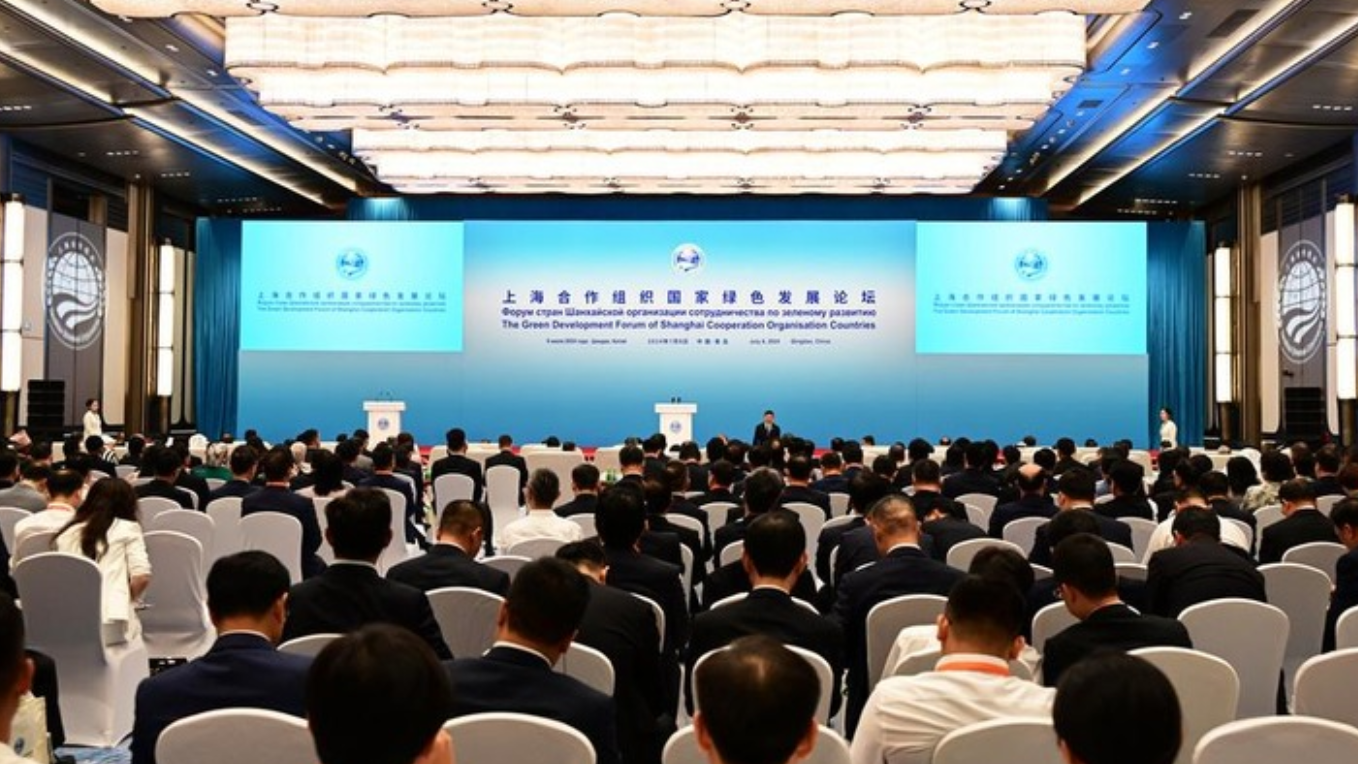QINGDAO, July 8 (Xinhua) -- About 45 km south of the center of Abu Dhabi, the capital of the United Arab Emirates (UAE), a large expanse of blue photovoltaic panels stands out among the desert's golden dunes.
Covering an area of about 21 square km, the Al Dhafra solar photovoltaic project has an installed capacity of 2.1 GW, and can generate enough electricity to meet the needs of about 200,000 households in the UAE.
It can also reduce carbon emissions by more than 2.4 million tonnes per year, provide about 5,000 local jobs, and increase the proportion of clean energy in the UAE's energy mix to more than 13 percent.
Built by a Chinese company, the project is a shining example of how countries of the Shanghai Cooperation Organization (SCO) work together to pursue green development. The UAE is a dialogue partner of the SCO.
At the ongoing Green Development Forum of SCO Countries, which opened on Monday in the coastal city of Qingdao, east China's Shandong Province, cooperative projects on green development have attracted the attention of forum participants.
They engaged in lively discussions about ways of setting up an SCO partnership for green development, and jointly contributing to regional and global green development.
Azerbaijan, also a dialogue partner of the SCO, has pledged to reduce greenhouse gas emissions by 35 percent by 2030 compared with 1990 levels, and 40 percent by 2050.
Chinese enterprises have played a part in the green energy transition in Azerbaijan. In early July this year, the Azerbaijani government and Chinese carmaker BYD held an online signing ceremony for the purchase of 160 electric buses.
At the forum in Qingdao, Ali Huseynli, First Deputy Chairman of the Milli Majlis of the Republic of Azerbaijan, said China has made great achievements in adhering to the development concept that "lucid waters and lush mountains are invaluable assets," which has given Azerbaijan immense inspiration.
In the northwestern region of Pakistan, a member of the SCO, Suki Kinari Hydropower Station on the Kunhar River, invested and constructed by China Gezhouba Group Co., Ltd., has brought clean energy to Pakistan, promoted local economic development, created a large number of local jobs and trained many skilled workers.
Syed Ghulam Mustafa Shah, Deputy Speaker of the National Assembly of the Islamic Republic of Pakistan, said that one of the SCO's many goals is to achieve cooperation on sustainable development and green technology among member countries.
He noted that the snow leopard population in Pakistan is rebounding due to the exchange of expertise, collaborative research and joint conservation efforts among the SCO countries.
Today, green development has emerged as a highlight of cooperation among SCO countries. Scientific and technological innovation in ecological and environmental protection industries has become an important force for optimizing the energy structure and achieving green and low-carbon transformation.
For instance, the Huadian-Teninskaya gas-steam combined heat and power plant, jointly built by China and Russia, can generate 3.02 billion kWh per year. Invested and constructed by Hunan Junxin Environmental Protection Co., Ltd., the waste incineration plant in Bishkek, the capital of Kyrgyzstan, is the first waste incineration power generation project in Kyrgyzstan.
Boosted by its dual carbon goals of peaking carbon emissions before 2030 and achieving carbon neutrality before 2060, China's environmental protection industry has made major technological breakthroughs in various fields and become an important force for promoting green transformation.
Guo Chengzhan, president of the China Association of Environmental Protection Industry, said that China's environmental protection industry has made innovative achievements that have significantly contributed to the green and low-carbon transformation of both the global environmental protection sector and the global energy system.




 A single purchase
A single purchase









